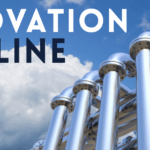Understanding your company’s “technical right-to-succeed” is critical to the success of your business: it’s what sets you apart from your competition. It allows you to provide the best products and services your clients and users have come to expect. It’s essential to understand the entire landscape of your company’s current technology and how it compares to the technology of your competitors and the future of technological innovation. This is where technology scouting and technology landscaping research reports come in to play an integral part in building your company’s technology portfolio.
Technology Scouting
Technology scouting is an element of technology management in which emerging technologies are identified, technology-related information is channeled into an organization, and supports the acquisition of technologies. The focus of technology scouting is on identifying solutions to an unmet technical or business need. When technology scouting, it’s essential to precisely define your unmet need and create a robust problem definition so that scouts can most efficiently identify the best solutions to your need.
Successful teams systematically explore how their required function is achieved across scientific disciplines, industry sectors, and patent databases. This comprehensive approach ensures no viable solution path gets overlooked. By casting a wide net—investigating everything from academic research and startup innovations to established industry practices—technology scouting leaves no stone unturned.
This tactical skillset has been well-honed by professional technology scouts, who possess the resources and toolbox to identify technologies and solvers in real-time efficiently. A technology scouting researcher will identify opportunities for potential collaborations and vet the best resources for your specific needs across multiple business verticals.
A Comprehensive, Cross-Industry Approach
Effective technology scouting starts with defining your challenge by its function—rather than getting fixated on a specific technology. By focusing on the underlying need, scouts are able to uncover solution paths from unexpected industries or scientific fields, often revealing approaches you might otherwise overlook. This broad, functional perspective enables exploration across scientific disciplines, industry sectors, and even patent databases, ensuring that no viable solution path slips through the cracks.
Human Insight Meets Systematic Analysis
The strongest technology scouting combines the intuition and expertise of experienced professionals with the precision of systematic research—sometimes leveraging data analysis tools or AI for deeper dives. By validating findings through both human judgment and structured investigation, companies can achieve a high level of accuracy and confidence in the solutions they pursue.
Visualizing the Solution Landscape
Mapping out the relationships between different solution approaches can be invaluable. Visual tools and frameworks help you see how various technologies connect, overlap, or diverge, making it easier to identify the most promising routes for collaboration or development.
This comprehensive, methodical approach to technology scouting not only uncovers the best solutions but also keeps your organization positioned at the forefront of innovation.
Start with Function, Not Solution
Breakthrough results often begin with defining your challenge by its function, rather than searching for a specific technology. By framing your needs in terms of the desired outcome instead of a preconceived solution, you open the door to discovering innovative approaches—even from unexpected industries—that may achieve your goals through entirely different methods.
Map the Complete Landscape
A comprehensive scouting effort systematically explores how your required function is being achieved across scientific disciplines, industry sectors, and global patent databases. This ensures that no viable solution path is overlooked and that your organization has a clear view of both obvious and unconventional opportunities.
Combine Human Insight with AI Precision
The most effective technology scouting blends the deep expertise of human scouts with the analytical power of AI-driven tools. By validating findings through both domain knowledge and systematic data analysis, you increase the accuracy and relevance of your results, reducing the risk of missing critical advancements or collaborators.
Visual Mapping
To further support decision-making, visual mapping tools can be used to illustrate relationships among different solution approaches, highlight white space opportunities, and clarify how diverse technologies might converge to meet your needs.
By leveraging these strategies, technology scouting moves beyond simply tracking trends—it becomes a proactive driver of innovation, ensuring your company is positioned to capitalize on emerging opportunities as they arise.
The Value of Systematic Scouting Processes
When it comes to R&D, success often hinges on the ability to approach challenges from multiple angles—not just searching for a specific technology, but defining the function or purpose you need to achieve. This is where systematic scouting shines. By focusing on what needs to be accomplished rather than how, organizations can uncover innovative solutions from industries and scientific fields that might otherwise be overlooked.
A thorough scouting process casts a wide net, surveying scientific literature, diverse industry sectors, and rich patent databases. This purposeful exploration means no promising avenue slips through the cracks. Blending the experience of internal teams with the analytical power of advanced tools, such as AI-driven research platforms and curated patent landscapes, ensures that ideas are not only found, but also validated for real-world potential.
What does this look like in practice? Before committing resources—and certainly before investing large sums—systematic scouts map out the full landscape of potential solutions. This proactive approach often shortens the innovation cycle dramatically, helping organizations pivot away from dead-ends and propel viable concepts forward much more efficiently.
Moreover, nearly every innovation challenge has been addressed in some form somewhere—whether in academic journals, patents filed by global firms like Siemens, or applications from unexpected sectors such as agriculture or aerospace. By methodically building on existing knowledge, R&D teams can stand on the shoulders of giants rather than reinventing the wheel.
All of this contributes to a higher recommendation rate among R&D teams: more solutions uncovered, fewer missed opportunities, and far less wasted time and resources. The result? A more agile, confident innovation process that reliably delivers better outcomes and, ultimately, greater success for your organization.
Avoiding the Reinvention Trap
One of the chief benefits of technology scouting is its proven ability to help your organization avoid duplicating work that’s already been done elsewhere. By systematically surveying what already exists—be it within academic research, patent literature, or industry developments—technology scouts can pinpoint solutions that align closely with your challenge. Rather than reinventing the wheel, your teams are able to leverage this pool of global knowledge, building on past advances instead of starting from square one.
This means you’re not simply chasing novelty for the sake of it. Instead, technology scouting enables smarter, more agile progress, connecting your unmet needs with practical, real-world solutions or partners already discovered by others in the field. In short, with the right scouting strategy, your organization spends less time retracing old steps and more time pushing the boundaries of what’s possible.
Gaining Insights from Broad R&D Expertise
When you share your R&D challenges with experts who have tackled problems across a wide range of industries, you open the door to new perspectives that might not be apparent from within your own organization. Senior technology scouts routinely encounter roadblocks and unmet needs from sectors as varied as pharmaceuticals, automotive, consumer electronics, and industrial manufacturing. By tapping into their knowledge base, you gain:
- Cross-industry solutions: Sometimes, the answer to a perplexing challenge in your field already exists elsewhere, perhaps adapted in aerospace or pioneered in the food industry.
- Objective challenge assessment: Experienced scouts will take time to understand the nuances of your technical challenge, asking precise questions to frame the problem and uncover hidden angles.
- Case studies and analogs: Learn from real examples—maybe a materials challenge was solved in renewable energy with a novel polymer, or a signal processing breakthrough from telecommunications could apply to medical diagnostics.
- New pathways for partnerships: Access to prior collaborations and insights into which potential technology partners, universities, or startups might best address your need.
The result? You gain actionable, targeted insights rooted in a broad body of experience, often helping you leapfrog traditional solutions or identify a promising technology faster than your competitors.
The Power of Human Expertise Enhanced by AI
Pairing human expertise with AI-powered analysis is a game-changer in technology scouting. While technology scouts bring deep industry knowledge, intuition, and relationship networks to the table, artificial intelligence excels at rapidly sifting through vast data sets, identifying trends, and uncovering patterns that might otherwise go unnoticed.
When these strengths are combined, the process delivers more reliable, well-rounded results. Human experts are equipped to interpret the nuance behind the data—asking the right questions, evaluating feasibility, and providing context—while AI speeds up discovery and ensures no relevant information slips through the cracks. In essence, you get the best of both worlds: thorough coverage and smart, experience-driven judgment. This approach helps organizations stay ahead of the curve by identifying not only emerging opportunities but also those hidden gems that pure automation might miss.
Technology Landscaping
Technology landscaping provides an in-depth assessment of a technology area to identify and evaluate relevant technologies’ current and future state as they are being developed across industries. It helps give a better overall picture of what is possible in the technology spaces your company plays. How long has it been since your company stepped back and took an objective look at the various technology spaces that are most relevant to your business? A professional technology landscaping researcher will take a comprehensive look at the technology spaces that matter to you – to help answer the tough questions necessary for making informed decisions for the future success of your business. It’s not enough to know where the puck has been – you need to have a sense of where the puck is going to stay competitive. Technology landscaping helps companies make strategic decisions about opportunities for their innovation pipelines to keep them competitive in both the near- and long term.
Mapping the Complete Technology Landscape
Taking the time to thoroughly map the technology landscape is crucial to ensure you’re not missing out on breakthrough innovations or potential partners. By casting a wide net—analyzing scientific literature, combing through patent filings, and surveying solutions across different industries and technical domains—you minimize the risk of blind spots. This broad, systematic approach helps your organization uncover unconventional solutions, spot adjacent technologies, and identify game-changing trends that may otherwise go unnoticed. In short, a comprehensive landscape assessment not only reveals where opportunities currently exist, but also where they may be emerging—ensuring you don’t leave any valuable possibilities unexplored.
Building on Existing Knowledge: Fueling Faster Breakthroughs
One of the most effective ways to accelerate breakthrough innovation is by leveraging the reservoir of knowledge that already exists—whether found in scientific literature, patent portfolios, or industry best practices. Rather than reinventing the wheel, organizations that tap into proven solutions can bypass costly trial and error, allowing R&D teams to focus energy and resources where it matters most.
By studying existing research, analyzing competitor patents, and learning from solutions in adjacent industries, companies can:
- Shorten development cycles: Existing technologies often provide a springboard, so your team isn’t solving every challenge from scratch.
- Avoid common pitfalls: Learning from prior attempts—both successes and failures—helps avoid repeating mistakes.
- Identify unexpected opportunities: Sometimes, the answer to your technical challenge is already out there, packaged in an unfamiliar context or industry. A thorough review of existing knowledge can reveal adaptations and applications you may not have considered.
- Foster smarter collaboration: Building on established work allows you to identify potential partners who have solved pieces of your puzzle, streamlining cooperation and reducing duplication of effort.
In essence, systematically building on existing knowledge creates a culture of informed innovation. It grounds your company’s efforts in proven realities, freeing you to channel your creativity into solving the truly unsolved—and helping push the boundaries of what’s possible at a pace that leaves competitors scrambling to keep up.
Visual Mapping: Uncovering Connections Between Solution Approaches
Visual mapping is a powerful tool in both technology scouting and landscaping, serving as a lens to clarify how different solution approaches relate to one another. By turning complex data and numerous options into easy-to-understand diagrams, visual mapping helps highlight overlaps, gaps, and unique pathways across technology spaces.
For instance, a well-designed matrix or mind map can expose unexpected synergies between technical solutions, chart competitive landscapes, or reveal trends as technologies evolve. This method empowers your team to see the bigger picture—much like stepping back to view a completed puzzle rather than focusing on just one piece. Such clarity is indispensable for identifying strategic opportunities, evaluating alternatives, and steering your technology roadmap with confidence.
The Importance of Both Technology Scouting and Technology Landscaping
Technology scouting and Technology landscaping often go hand in hand – you shouldn’t invest in one without the other. When paired together, your company will have access to a unique skillset dedicated to identifying and analyzing the technical information you need to make strategic roadmap decisions and address unmet needs tactically. Access to this kind of innovation service will best empower your team to make the critical business decisions required for your company’s continued “technical right-to-succeed.”
Evaluating Opportunities as a Team
When it comes time to assess your technology landscape, the evaluation process shouldn’t happen in a silo. Bringing your team together to review and select the most promising opportunities has several advantages that can significantly influence your outcomes.
First, collaborative evaluation ensures a diversity of perspectives—technical experts, business leaders, and end users can all weigh in. By pooling knowledge from across departments, you’re less likely to overlook key risks or miss hidden gems that a single point of view might ignore. For example, an engineer might spot a technical constraint that the marketing department misses, or the finance team could flag budgetary considerations that reshape the priorities.
Second, selecting opportunities as a team fosters shared ownership of the final decision. When everyone has a seat at the table, there’s more buy-in and accountability for moving forward. This not only helps streamline implementation but also reduces internal resistance and increases the likelihood that the chosen opportunities will be championed at every level of your organization.
Finally, group evaluation helps future-proof your strategic decisions. By collectively vetting each option against market trends, competitor movement, and your company’s own technical trajectory, you build a more robust, holistic roadmap—one that’s informed by experience, creativity, and a clear-eyed understanding of your true capabilities and long-term vision.
Get started on assessing your own technology landscape by contacting us today.






